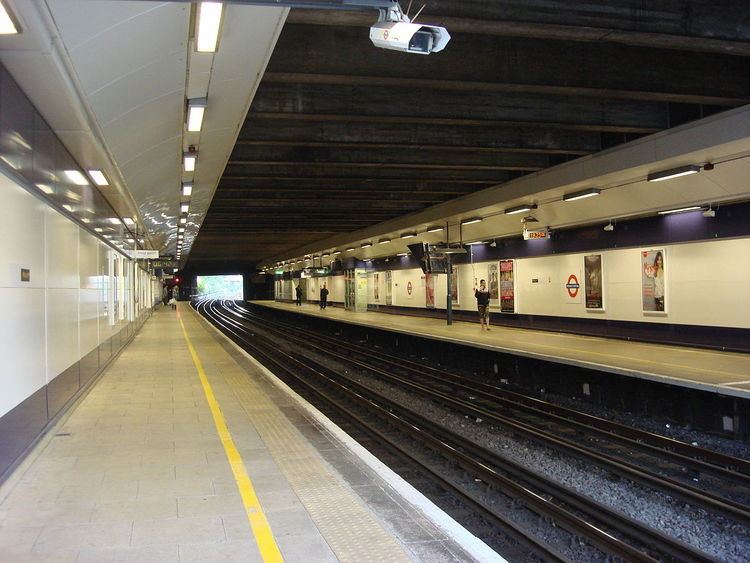Location Wembley Station code WMB Accessible Yes Owner Network Rail | Managed by London Underground Number of platforms 6 (4 in use) Opened 1842 DfT category C2 | |
 | ||
Local authority Address 7AF, High Rd, Wembley HA9, United Kingdom 1 May 1882 Renamed "Sudbury & Wembley" 1 November 1910 renamed "Wembley for Sudbury" 4 June 1984 Bakerloo line service re-instated Similar Wembley Park tube station, North Wembley station, Stonebridge Park station, London Underground, Willesden Junction station | ||
Standing outside wembley central station square london 19th october 2012
Wembley Central is an interchange station in Wembley, in north-west London, served by London Underground Bakerloo line, London Overground, London Midland and Southern. It is on the modest-sized east-west High Road. The station serves Wembley Stadium.
Contents
- Standing outside wembley central station square london 19th october 2012
- Trains wembley central station 24 02 2012
- History
- Accidents and incidents
- Services and operations
- Station works
- Re development
- Connections
- References
Trains wembley central station 24 02 2012
History
Accidents and incidents
Services and operations
As of December 2015, the typical Monday-Saturday off-peak service is:
Wembley Central has the appearance of an underground station due to the elevated position of the High Road (where the main entrance was until recently behind a 1940s shopping arcade) and the enclosed nature of the platforms below the raft upon which Station Square is built; it is actually generally at or above the local ground level, having been reconstructed by British Rail in its current form during the 1960s electrification of the West Coast Main Line. It is the first station out of Euston to have platforms on all three pairs of tracks and the combination of the confined space and through trains passing at speed on platforms 3-6 (the main line platforms) create a wind tunnel effect which can be dangerous for passengers.
As a result, the main line platforms (for Southern, London Midland, and Wembley Stadium additional services) are locked out of use for most of the day and entrance is only allowed 5 minutes before the trains are due, the Southern services, which use platforms 5 and 6 (on the slow main line). Passengers alighting from these services must make their way to the end of the platform and staff will lead them out of the station. Gates into these platforms open 5 minutes before the train is expected to arrive.
The station was modernised in 2006 with additional safety features.
When a major event occurs at Wembley Stadium, all London Midland services call here always stopping at platforms 5 and 6. Virgin Trains' services are formed of trains which are too long for the platforms and take longer to set down and pick up. As a result, these services will make additional stops at Watford Junction or Milton Keynes, for customers to change onto London Midland or Southern services.
Fast London Midland services using platforms 5 & 6 are usually longer than the platforms. So, when trains are formed of more than six coaches, customers wishing to board and alight the train must do so from the front four coaches only. British Transport Police officers maintain a high presence on match days, particularly at this station and on all train services.
Station works
The passenger footbridge at the London end of the station, completed in late 2006 by civil engineers C Spencer Ltd, carries extra foot traffic to and from the platforms during event days at the nearby Wembley Stadium; the everyday access is at the "country" end of the platforms. In practice, this means the bridge is usually locked and out of use, only being opened when the stadium itself is in use.
Other recent works include the resurfacing of platforms 1 and 2 complete with the installation of curved steel cladding panels also completed by contractor, C Spencer Ltd. The station's staff received refurbished messing facilities and new public toilets have also been installed.
In 2011-12, the station was made step-free, in preparation for the Olympics. A step-free route was provided between the station entrance and platforms 1 and 2 for the first time, with the installation of two new lifts and a stair lift. The toilets were refurbished to make them fully accessible. Two platforms were extended as well. This improvement scheme cost £2.5m.
Re-development
In June 2008, the London Borough of Brent (the council of the local area where the station is) planned that the station was going to be demolished for re-development, as part of the Wembley Central Square plan, by St. Modwen construction company (although the plan also included new apartments, shops and open space surface).
Connections
London Buses routes 18, 79, 83, 92, 182, 204, 223, 224, 297, 483 and H17 and night routes N18 and N83 serve the station.
